Menu
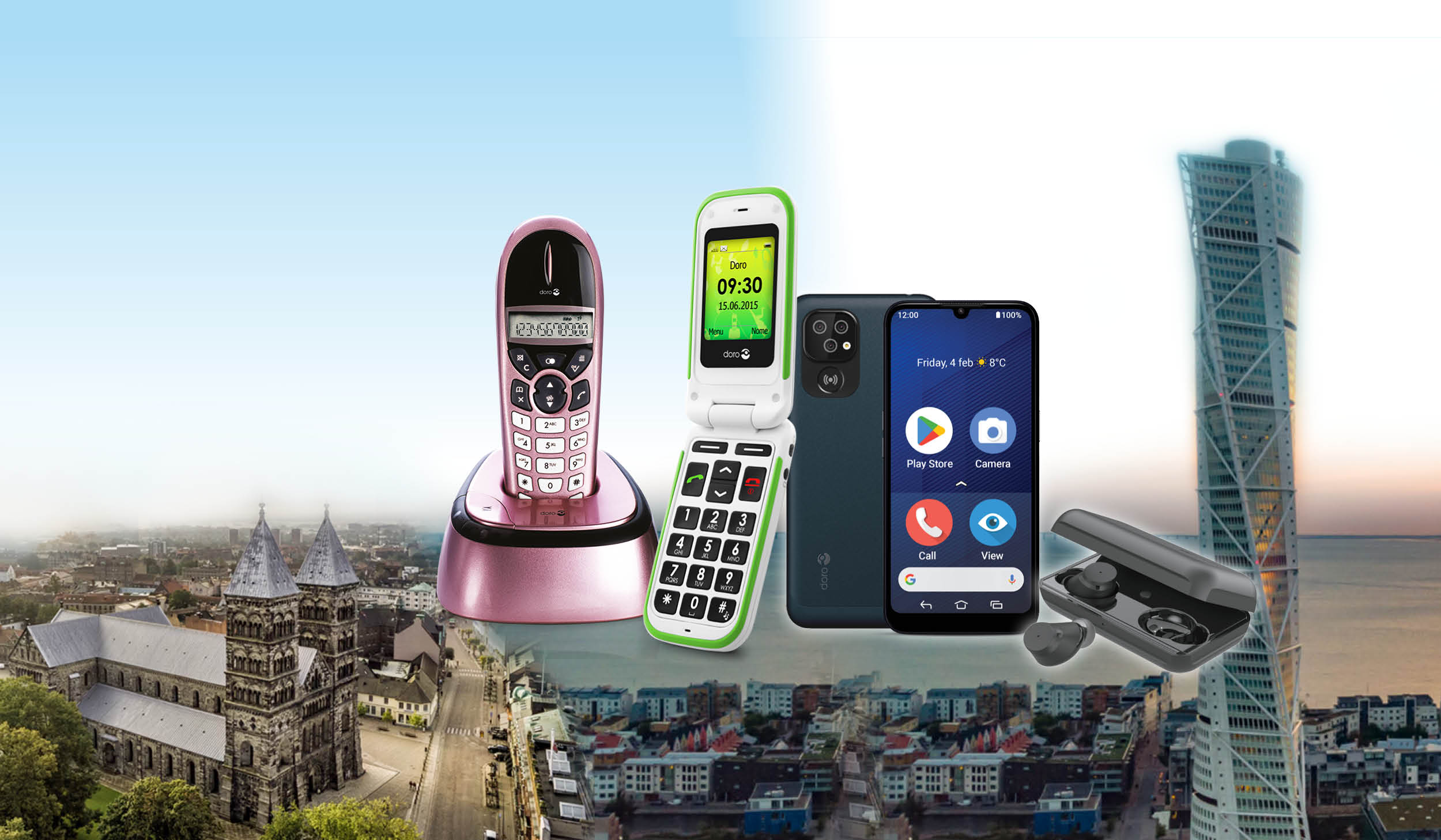
2000 - 2024
With all the attention Doro was receiving for being one of the fastest growing companies of the 1990s, expectations at the start of the 2000s were high. Especially with the great potential that the Internet and digital communication appeared to hold. In reality, however, the company was on a path towards collapse as it ran into a perfect storm of external challenges, mounting quality problems and dwindling margins.
How bad could it be? For starters, global component shortages were impacting production, and the rising US dollar was only making things worse. Consumers had grown accustomed to constantly falling prices for home electronics, leaving no room for price hikes to help balance things out, so margins were shrinking on all of Doro’s products. The company was also caught up in a costly dispute with a supplier.
While those challenges were mainly beyond Doro’s control, there were self-inflicted problems as well, like decisions that had led to a large portion of inventory becoming virtually worthless. There were also overwhelming quality issues, with some products having a 100% return rate!
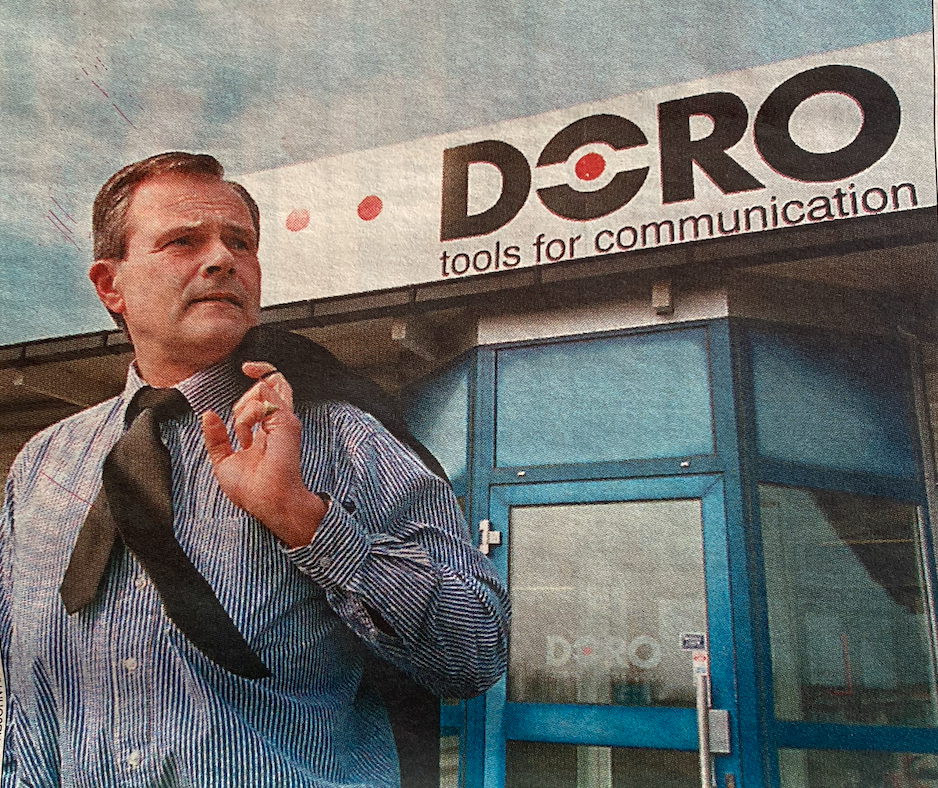
Through it all was also the need to keep investors informed and the share attractive. Finally in September of 2000, after issuing a second profit warning within a short period of time and despite Claes Bühler’s overall long and successful tenure as founder and CEO, the board of directors fired him.
“There were a lot of sad faces when they let Claes go like that,” recalls Anders Turesson, who had just joined Doro the year before. “That was the first CEO change in our history – kind of a big thing.”
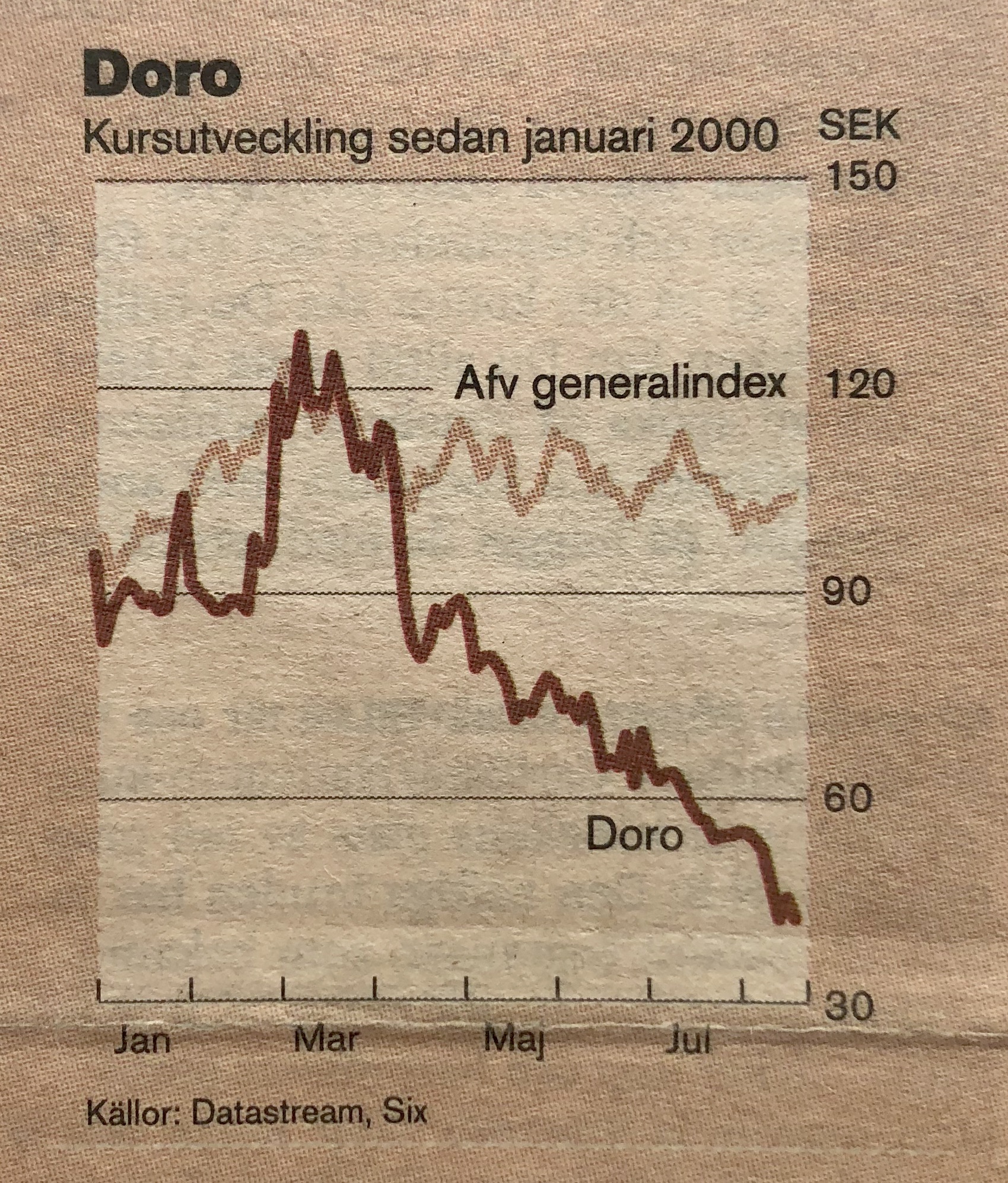
From the market’s perspective, Doro was in the doghouse. Stock plummeted 75% that year and Peter Cullin, once a minority owner, says he still doesn’t understand how the company didn’t go bankrupt. The board eventually hired a new CEO, Gunnar Åkerblom, to right the ship, which would prove to be no easy task. Åkerblom did what was necessary to save the company – laying off staff and closing down service, the warehouse, product lines and more – whatever it took to stop the bleeding and keep Doro from going under.
“Our product portfolio was cut to 30% of what it had been before,” recalls Calle Krokstäde, a part of Doro for nearly thirty years. “It was a tough job, but it was also the start of our actively working with quality and instructing our suppliers in China, which became really important for us moving forward.”
Åkerblom prevented the worst from happening, but with most products still no longer profitable, a new course for the future would have to be charted.
In one swift move that took everyone by surprise, the board fired Åkerblom in 2003 and replaced him the same day with Rune Torbjörnsen. Torbjörnsen’s job was to lift sales and get Doro back on its feet. He brought in a concept developer whom he had worked with before, Fredrik Forsell. Together they implemented a strategy to investigate four possible avenues, or potential business areas, for future development. These were named “Care,” “Home,” “Luba” and “Business.”
The name “Luba” was a play on the Russian word “ljubóvʹ”, meaning “love.” This avenue was all about cool, innovative and durable electronics for outdoor lifestyles. The Luba team came far in developing products like a waterproof MP3 player for swimmers, an outdoor GPS module with topographical maps, helmet cams and Hestra ski gloves with an integrated sports watch. Some that made it all the way to the market before the plug was pulled on further investment were sporty walkie-talkies called FreeBird and AirLuba. These were bundled with a third Luba product called Throatmic, an innovative headset for windy environments like skiing. There was even a walkie-talkie wristwatch called BlackBird.
“Home” took care of the surviving phone portfolio, and “Business” focused on a range of items including high quality Doro ProSound headsets incorporating Sennheiser technology for every type of professional application such as call centres, hotline operators and telemarketers. “Care,” led by Peter Cullin, was to look more into phones that could be extra advantageous for seniors.

“We already had some models that were selling well,” says Peter, “and we put together four products more or less aimed at people with disabilities.” While working on a user interface designed to meet the needs of seniors, the team reached out to Professor Maria Benktzon at Ergonomidesign in Stockholm, a pioneer in the field of Inclusive Design. “That collaboration led to the HearPlus 318, something I am very proud of,” says Peter.
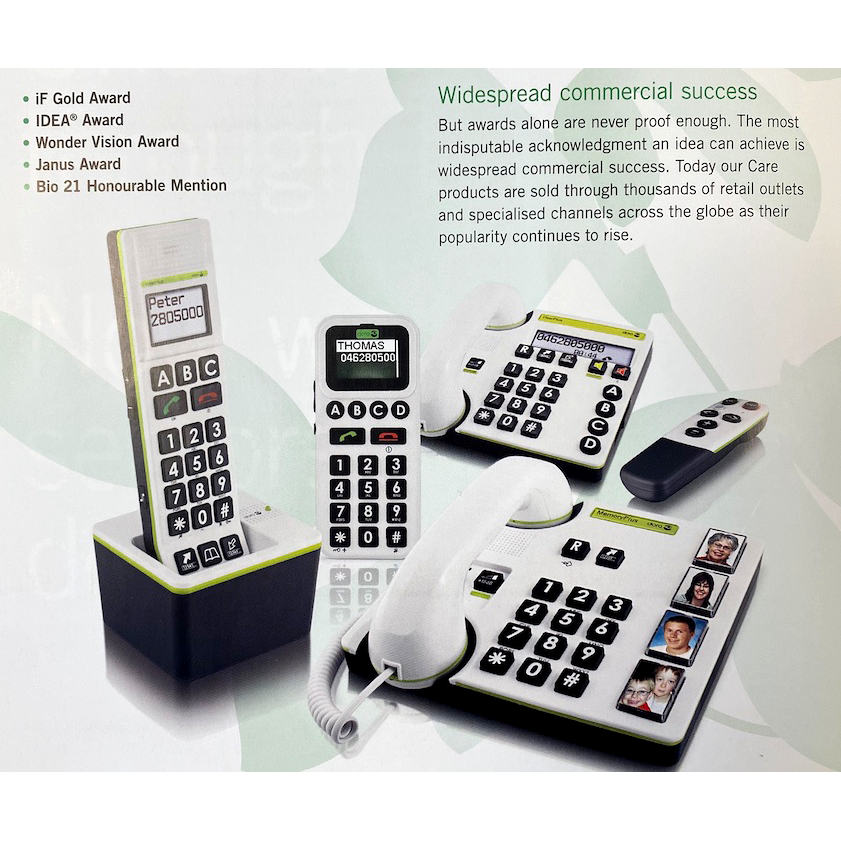
In the end, Care proved to be the winning strategy. Subsequently, all focus and resources were concentrated to that area, leading to a new business unit called “Care Electronics.” The collaboration with Ergonomidesign grew and resulted in several products designed to meet the specific needs of seniors, some of which went on to earn prestigious international design awards. It also paved the way for the next game-changing idea in Doro’s effort to reinvent itself – mobile phones for seniors.
In 2007, following changes on the board of directors, Jérôme Arnaud, director of Doro’s subsidiary in France, was elevated to new CEO for all of Doro. That same year the company launched its first mobile phones, the Doro HandlePlus 324gsm and the Doro HandleEasy 326.
By that time the leading makers of mobile phones were busy trying to outdo each other by adding more and more features to smaller and smaller phones. Some brands had become favourites among business users, others among the younger, hipper crowd. Meanwhile, the ageing population was being ignored. Doro saw an opportunity to go in a direction none of the mainstream brands appeared interest in, and went for it.
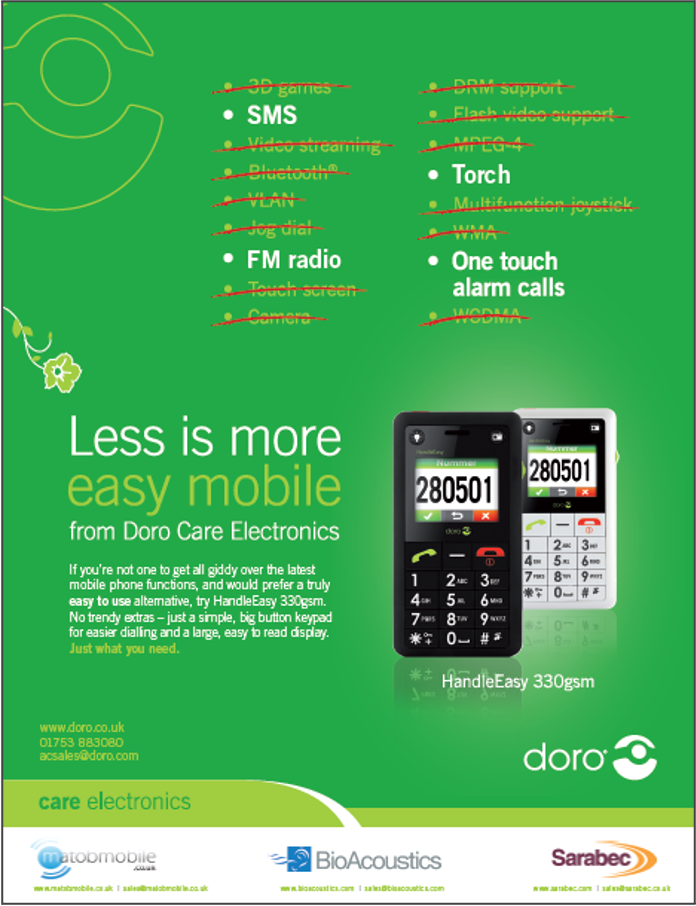
It was a daring path to choose, especially considering that no customers were convinced and there had even been some resistance internally. But on some level the idea of mobile phones made with the same DNA as found in Doro’s ergonomically designed big button corded and cordless phones did make sense. As acceptance for “mobile phones for seniors” eventually grew among key mobile phone operators, a new customer segment, it became clear that Doro had in effect created an entirely new niche.
It was a niche with enormous potential that, according to research, would only increase as the older population continued to grow. It gave the company a way to bounce back from the tough 2000s and, moreover, it set the trajectory for revitalised growth, innovation and expansion for the next decade and a half, ensuring Doro would still be around to celebrate its 50th anniversary in 2024.
Copyright © 2025 Doro AB. All rights reserved